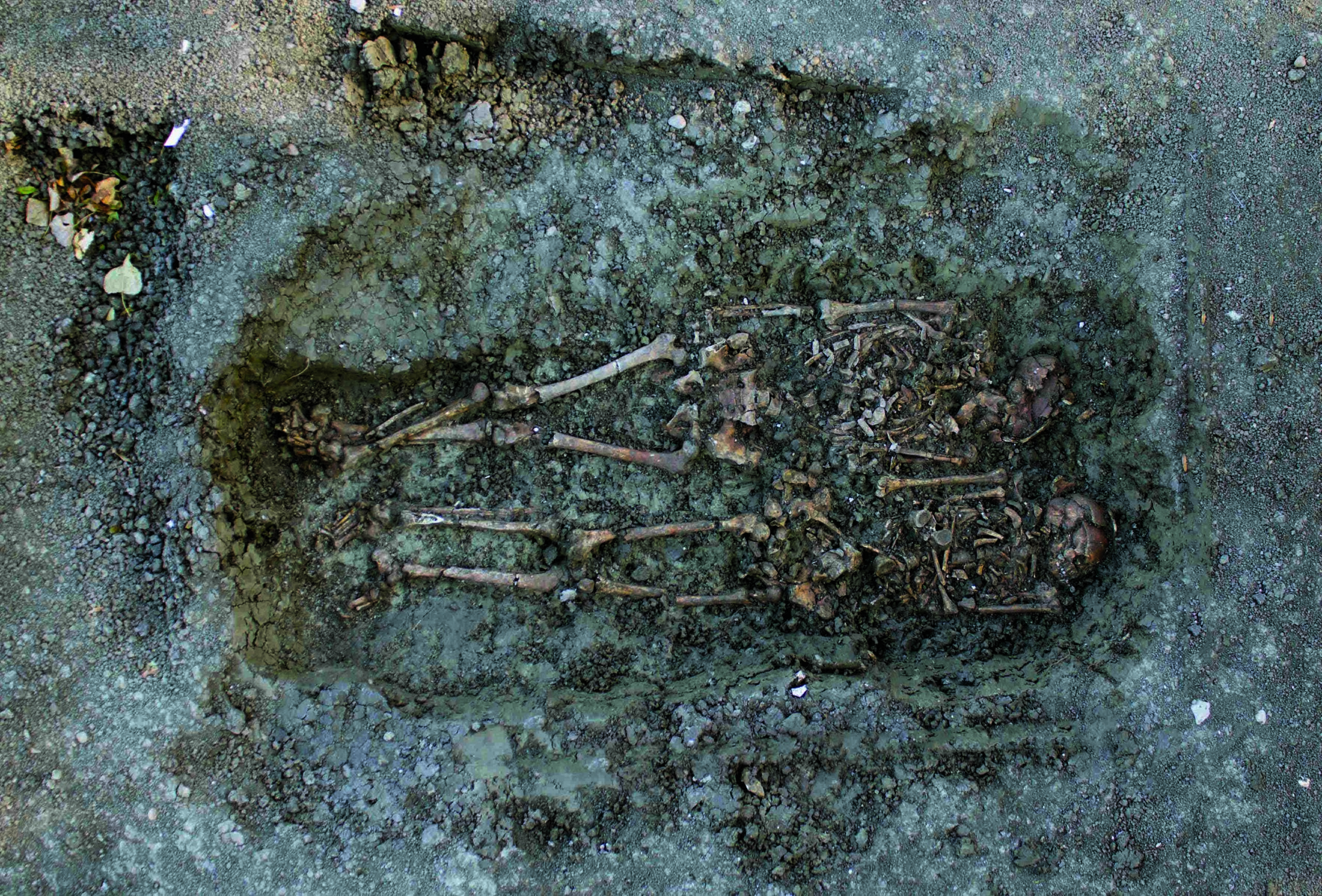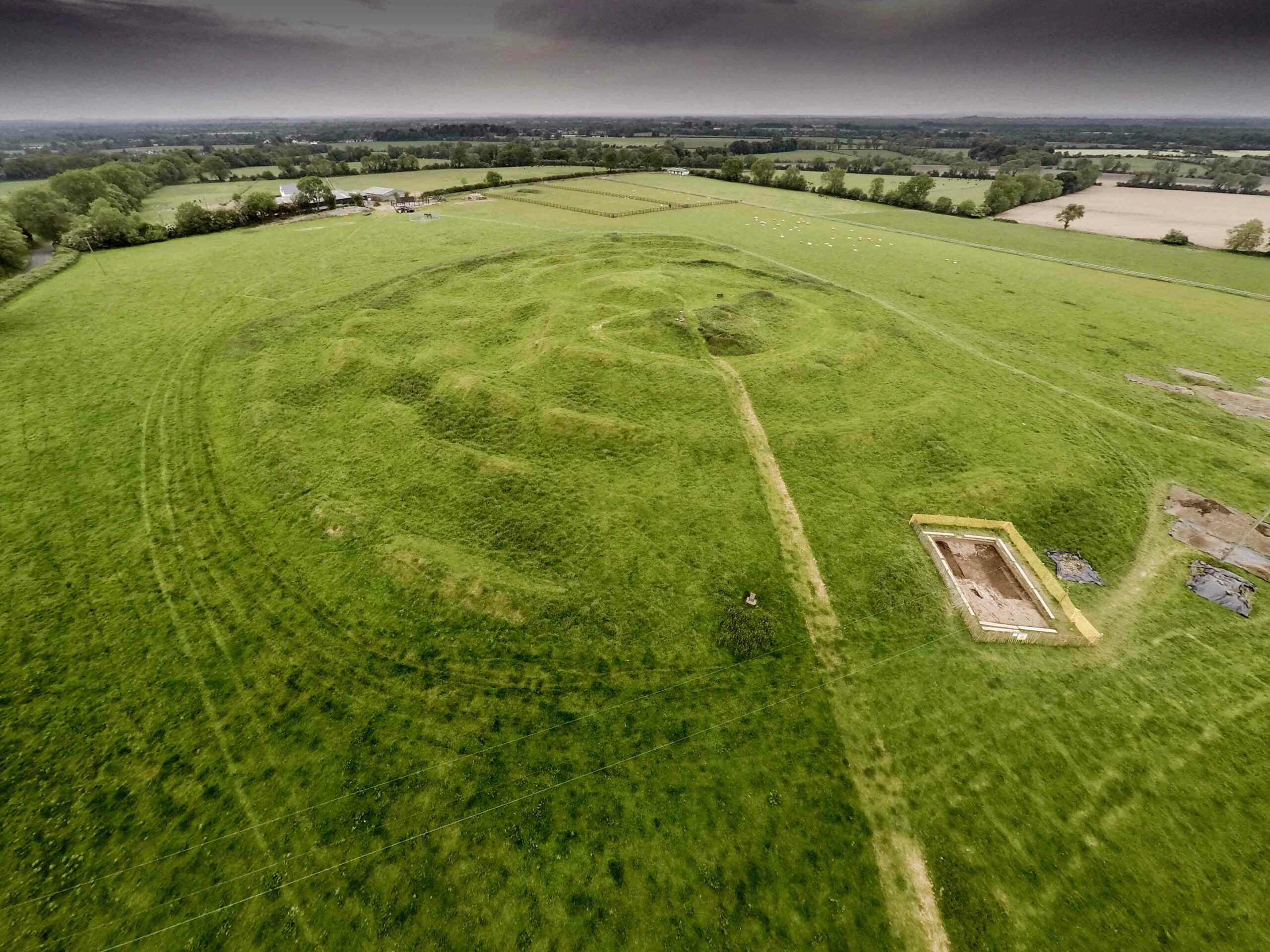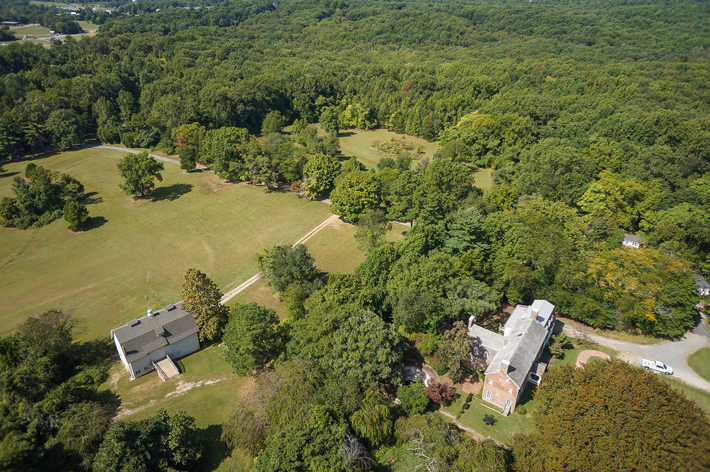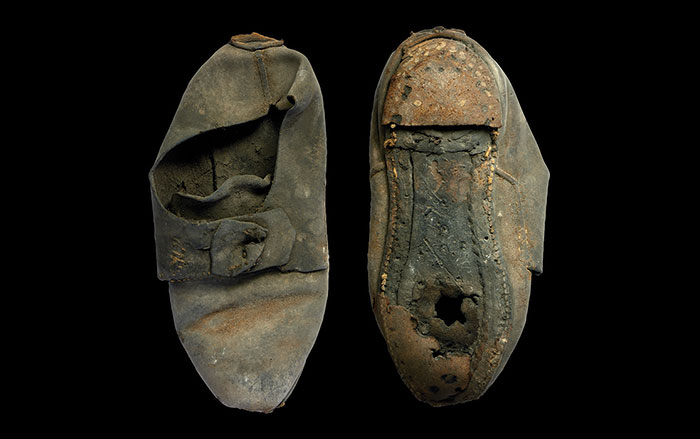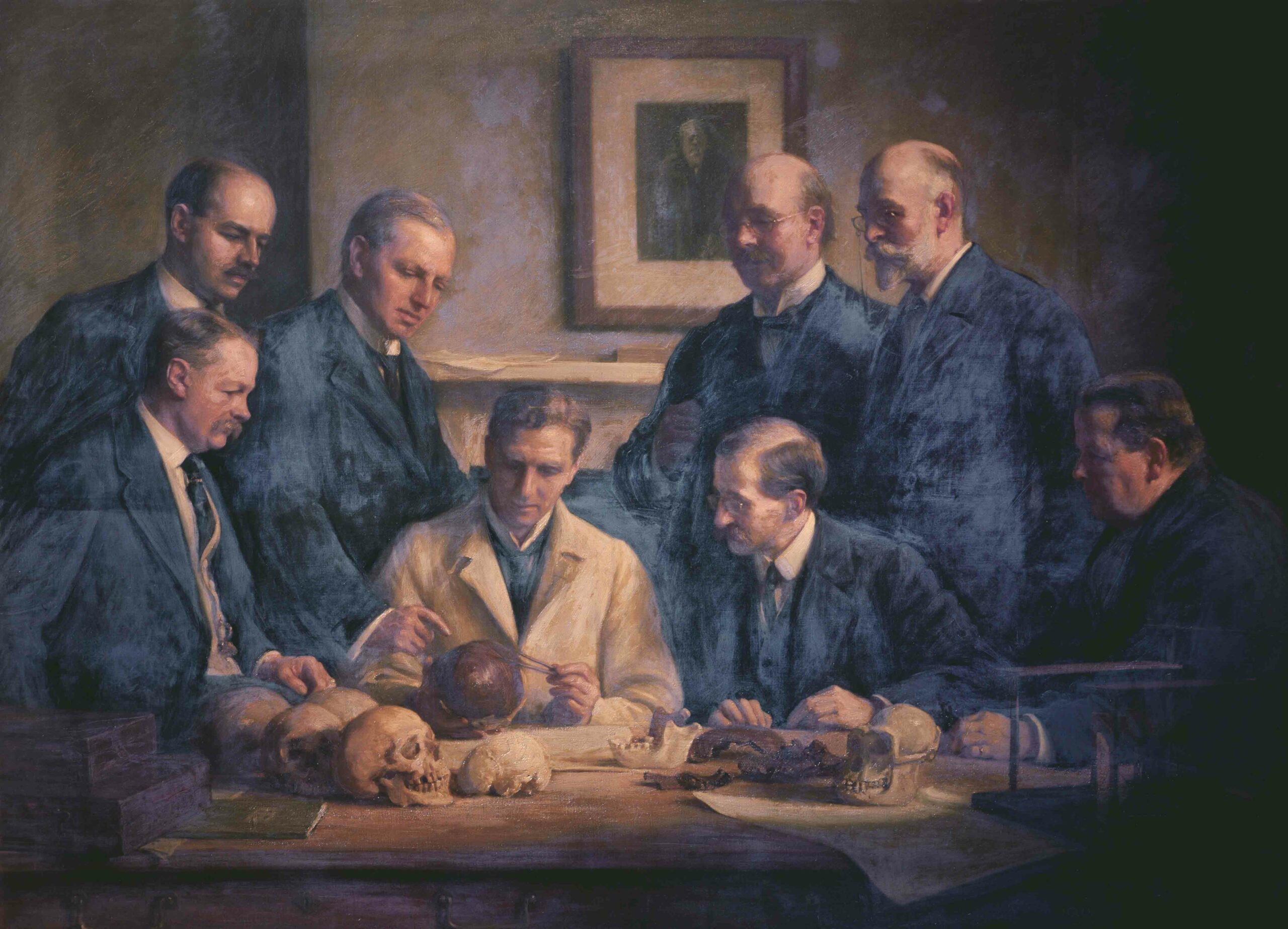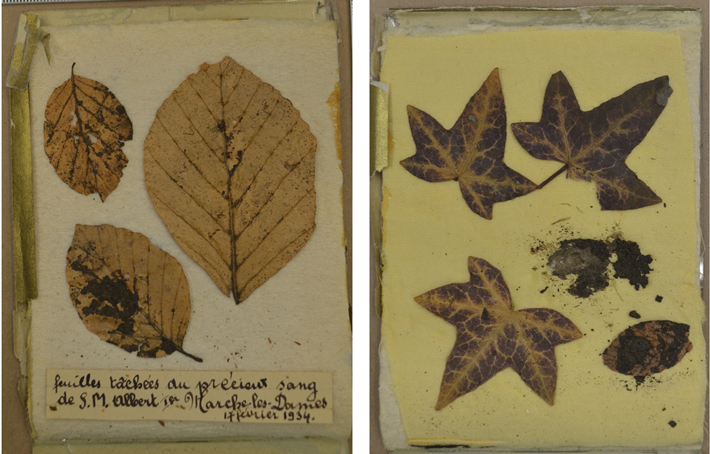
Belgium’s King Albert I was found dead at the foot of a cliff in the Ardennes region one night in February 1934. The official story holds that the avid mountaineer fell while climbing solo, but conspiracy theorists have long suspected he had been murdered or committed suicide elsewhere, and was transported there. Genetic testing of blood on leaves—taken as souvenirs by people who mobbed the site after his death—may have ruled these scenarios out.
In 2013, a journalist purchased some of these leaves, which had been mounted, and turned them over to researchers, who established that they were indeed stained with human blood. A team led by Maarten Larmuseau of the University of Leuven found that genetic material in the blood matches that of two of Albert’s living relatives, one from each side of his family. Researchers believe that his blood would not have gotten onto the leaves unless he had fallen, which, alongside archival evidence, undermines the conspiracy theories. “There were no witnesses, so we will never know the truth,” says Larmuseau. “But the most likely hypothesis is that he just fell.”



